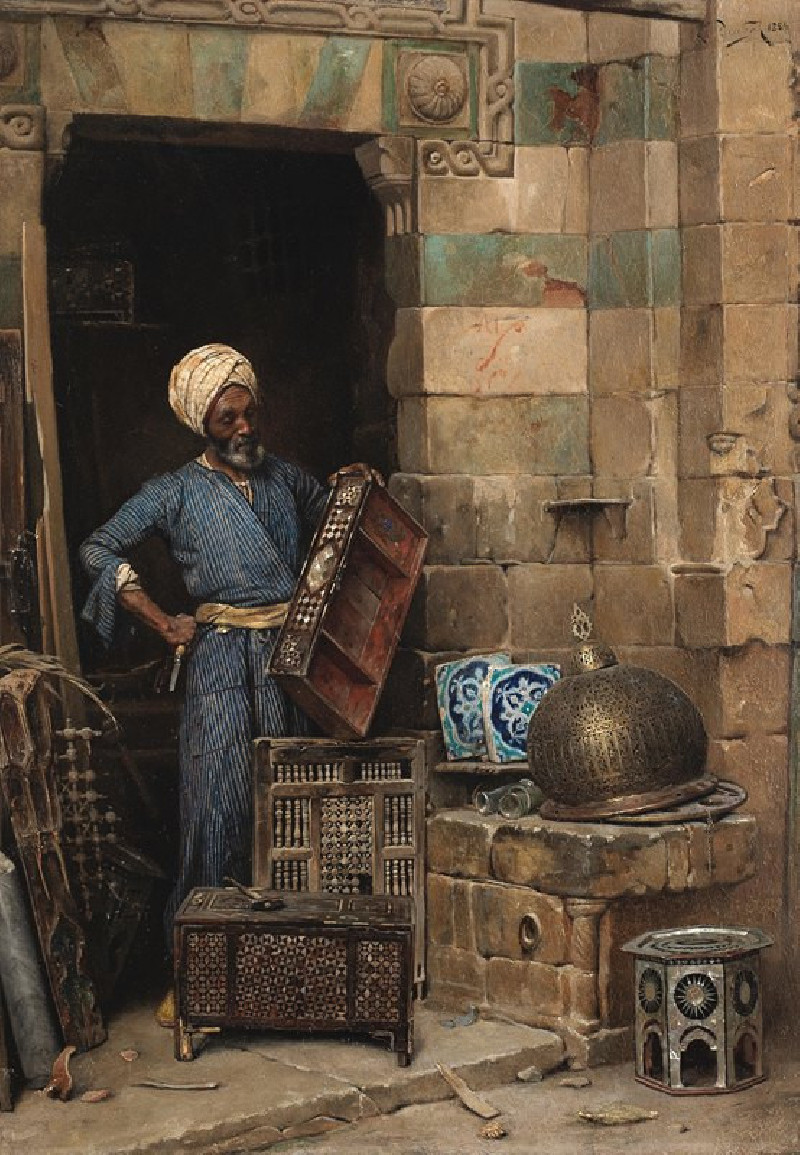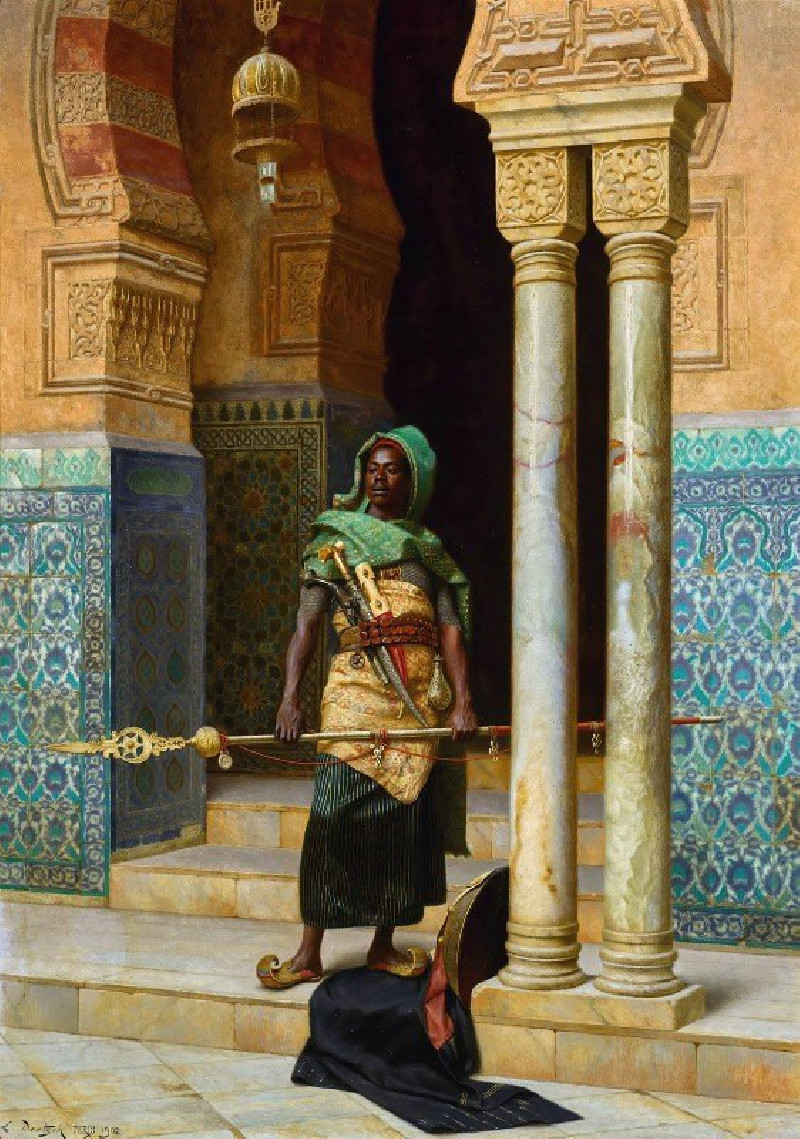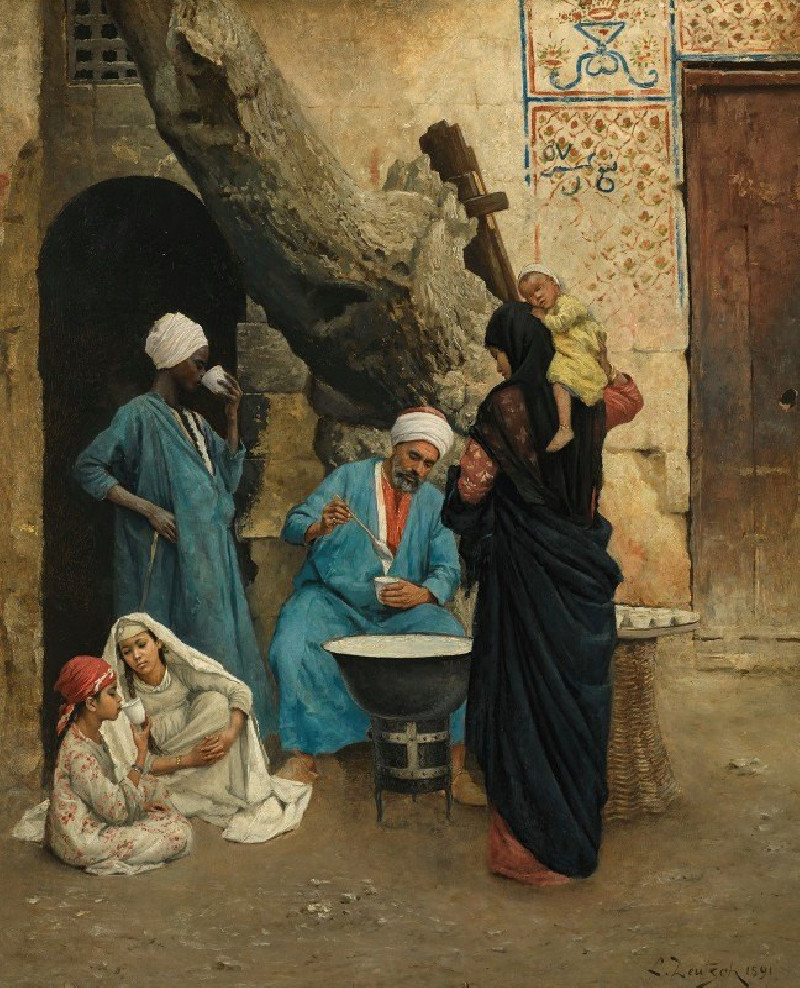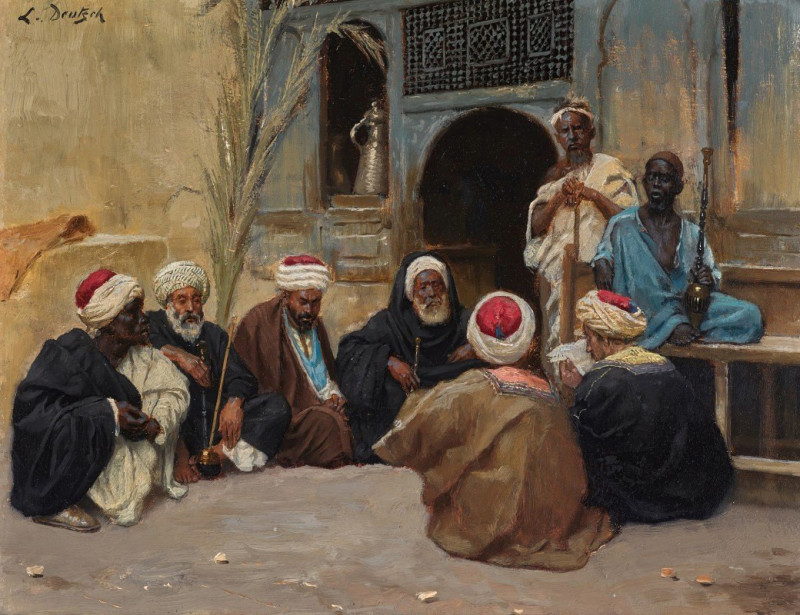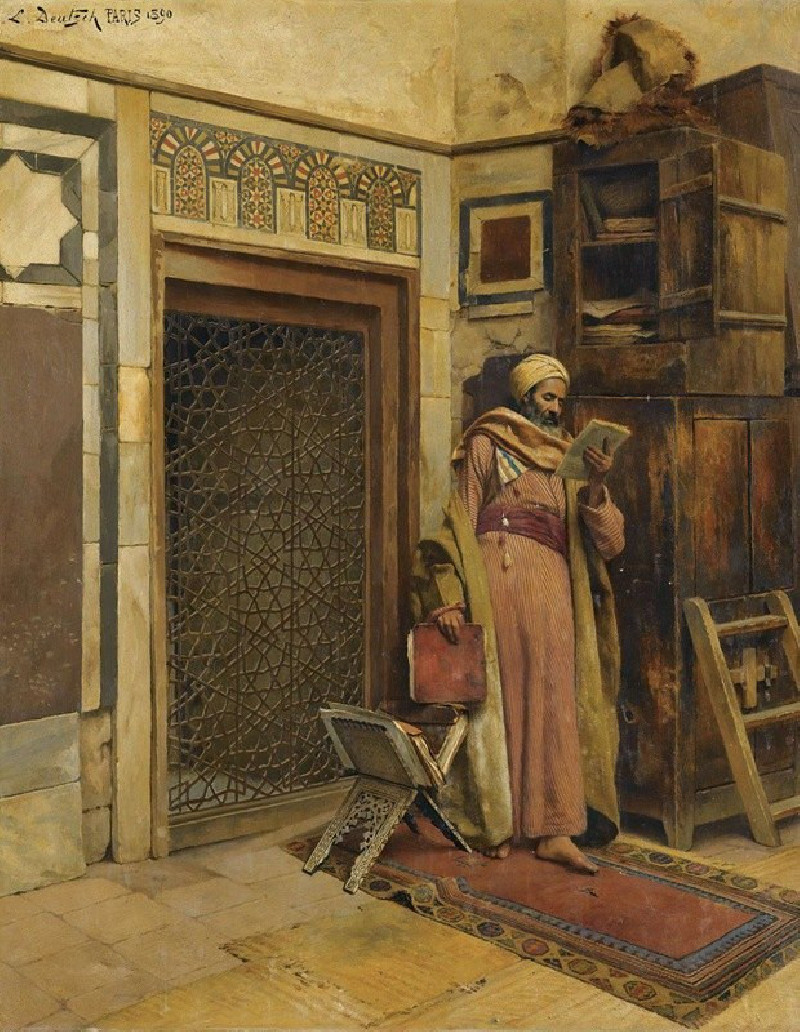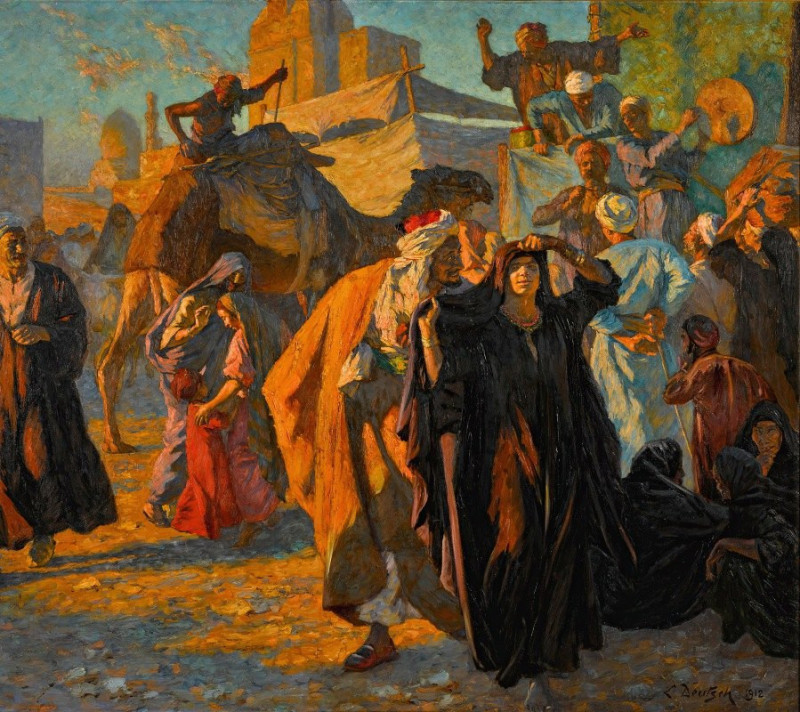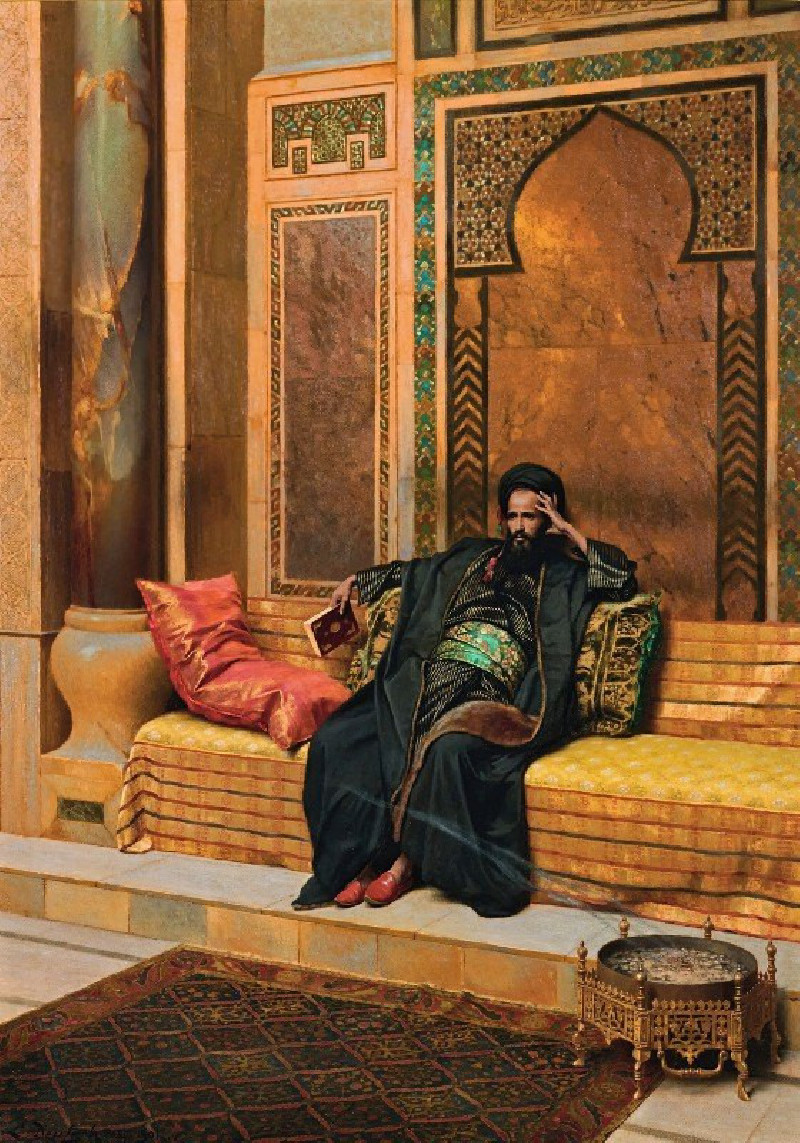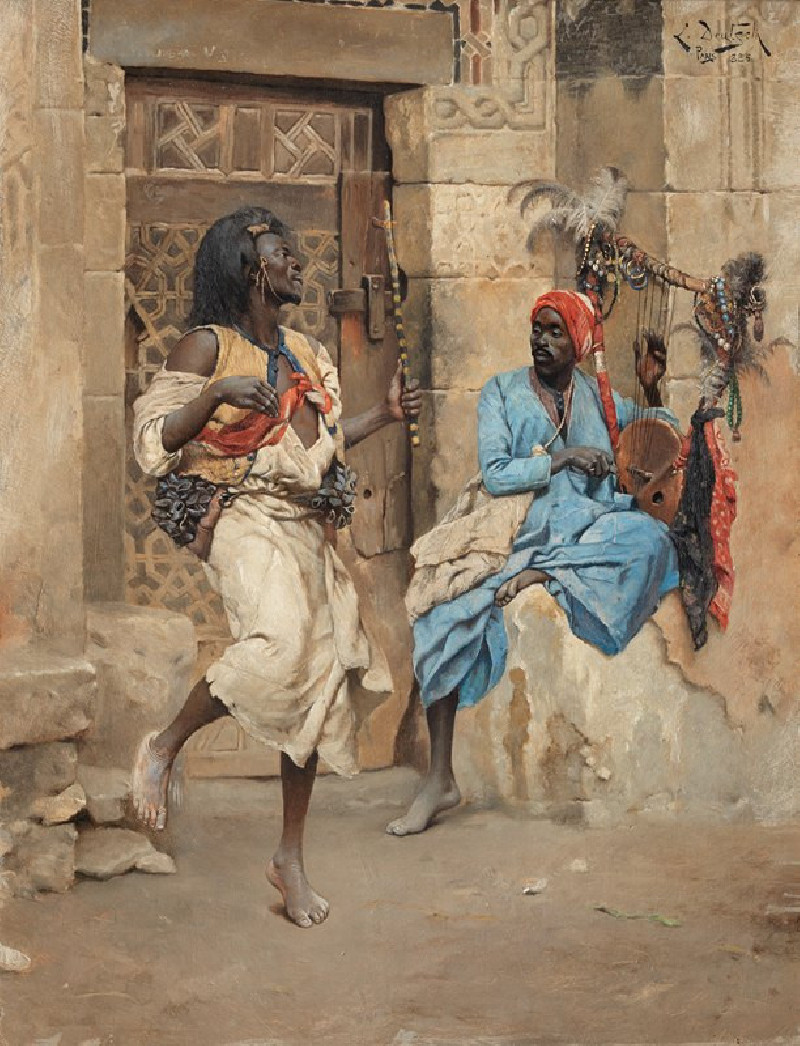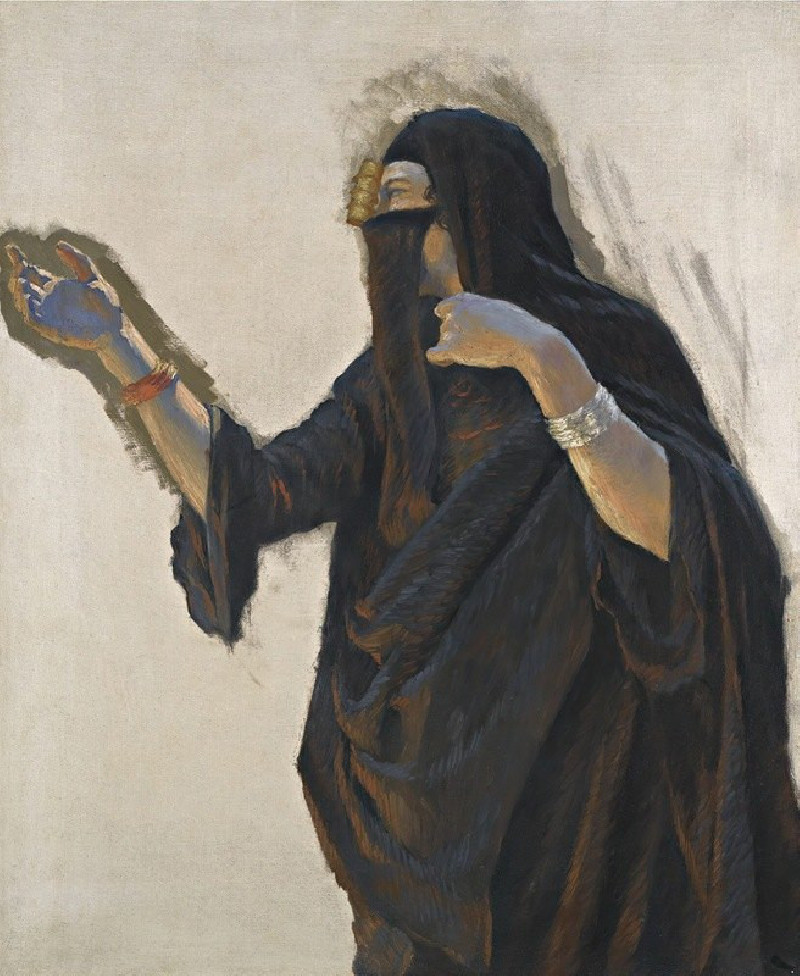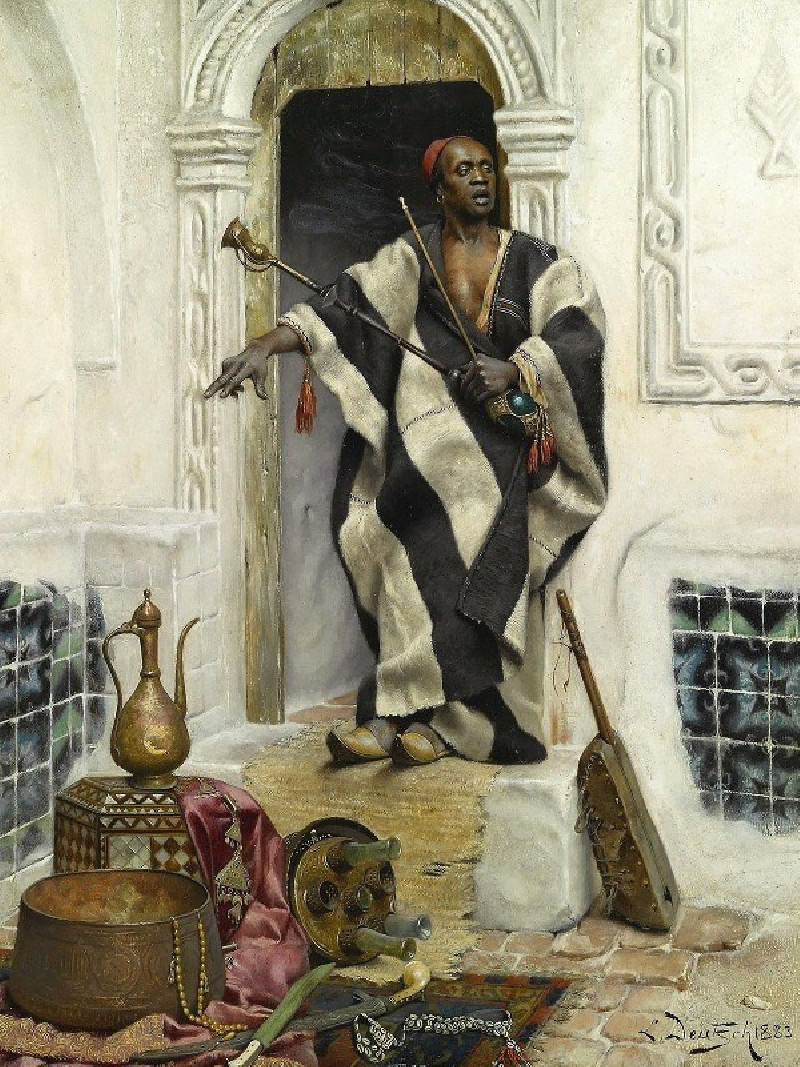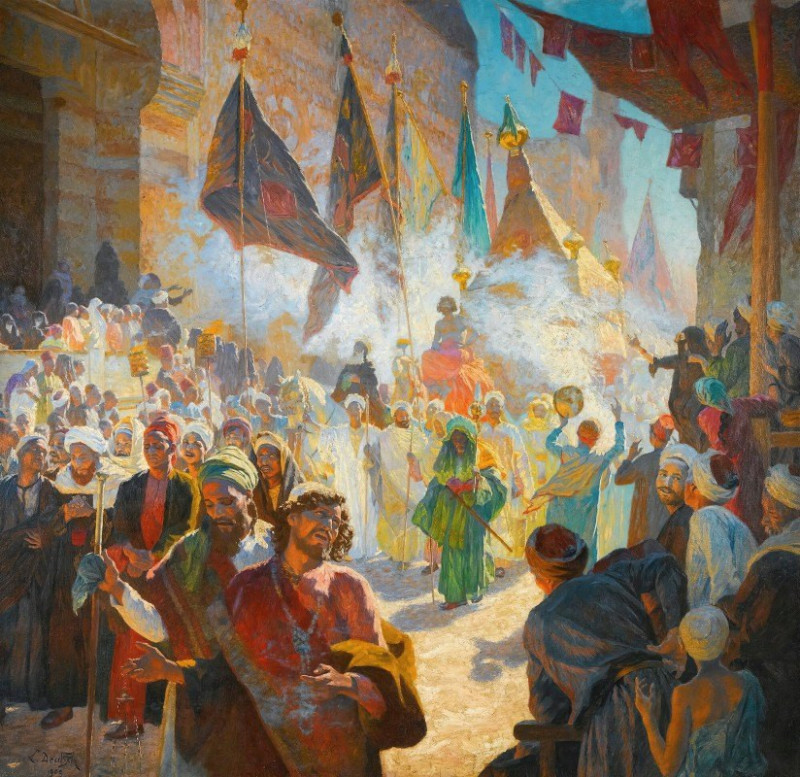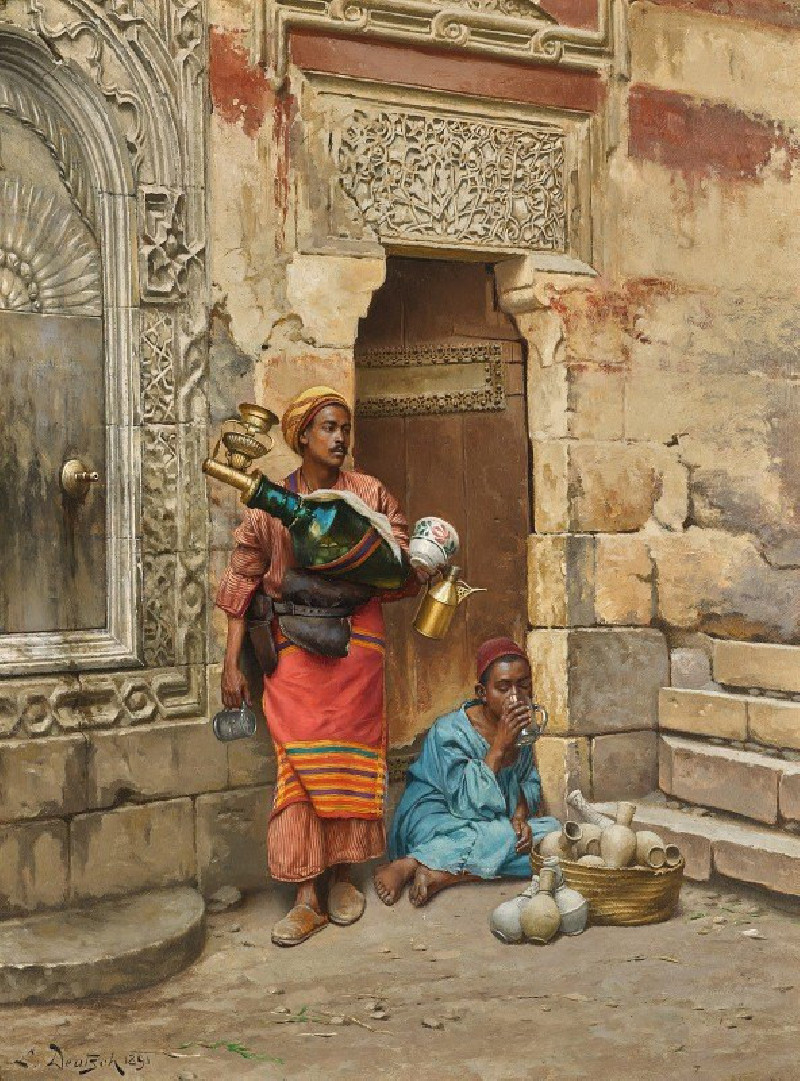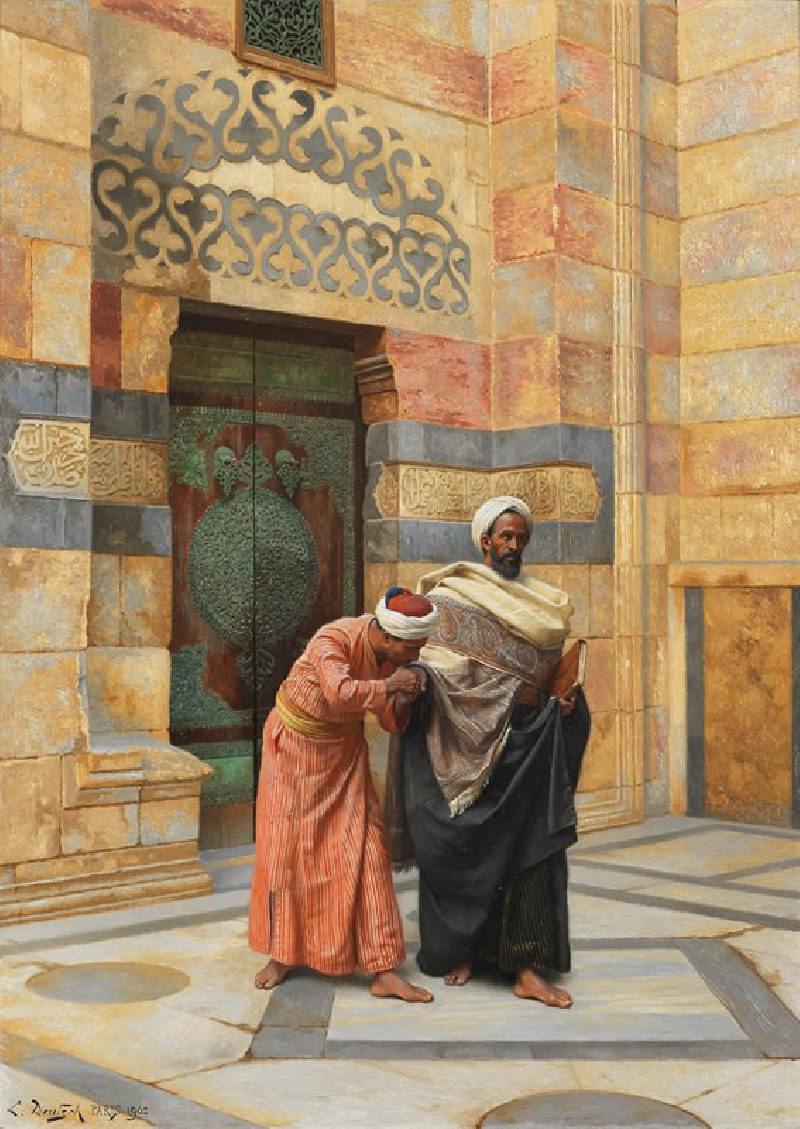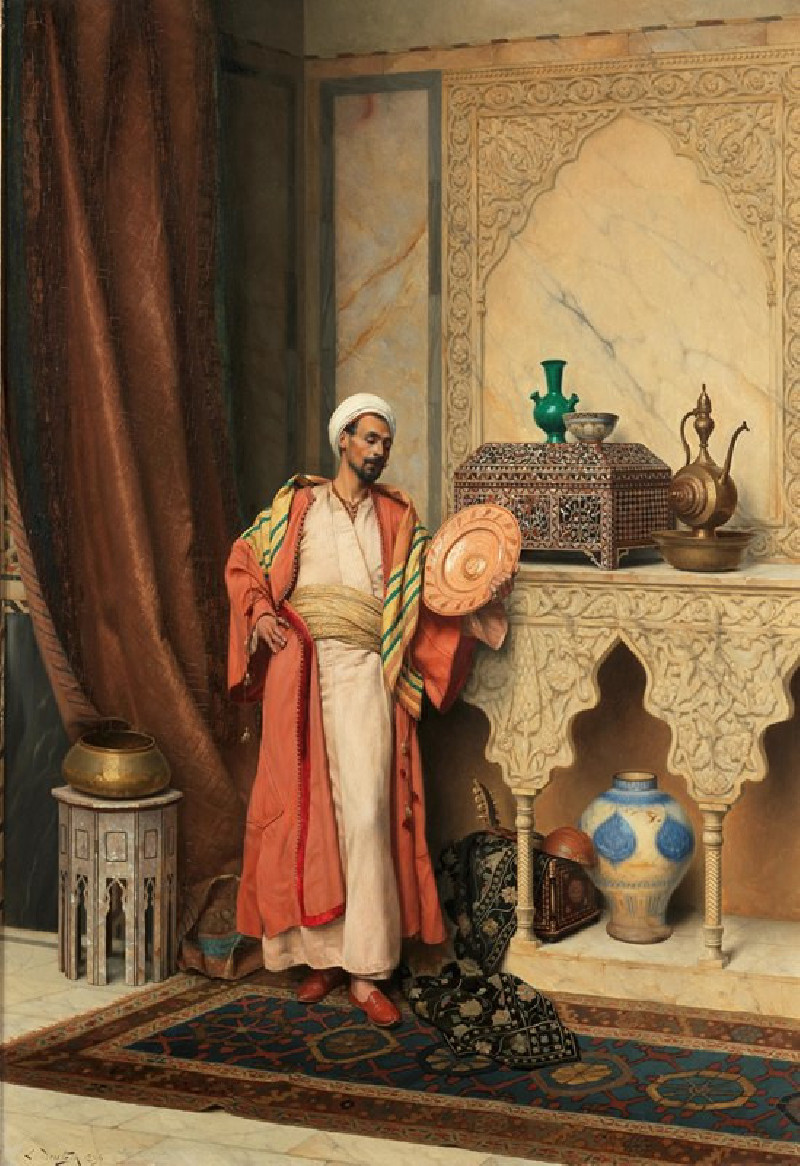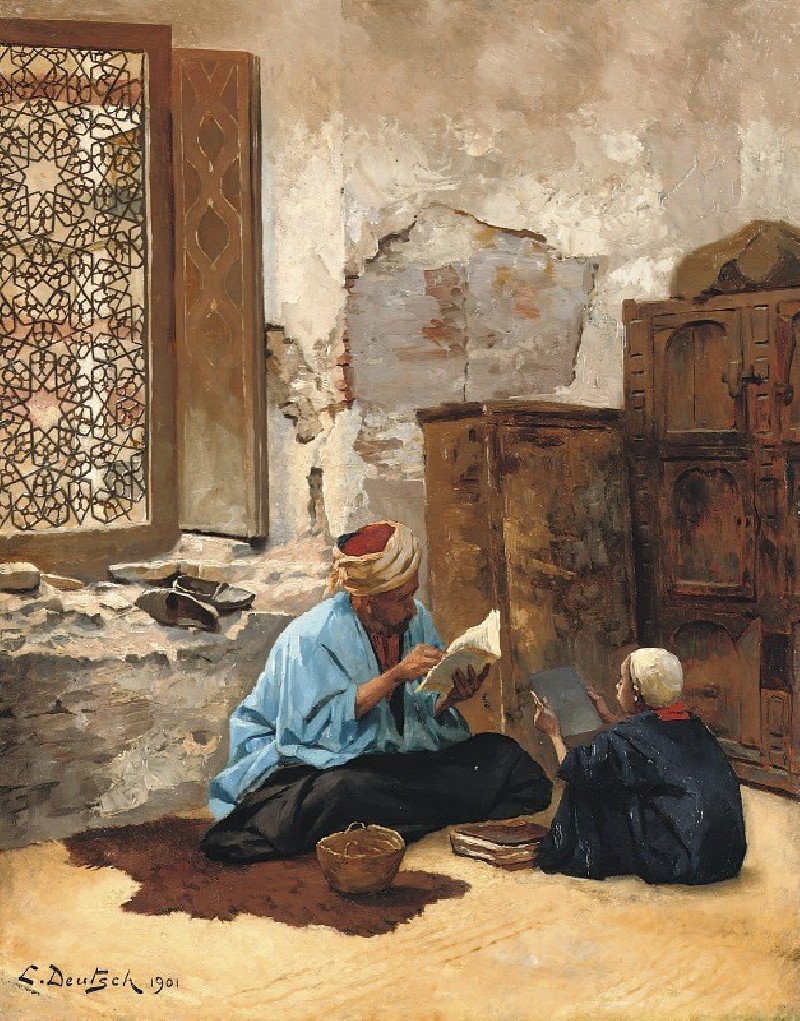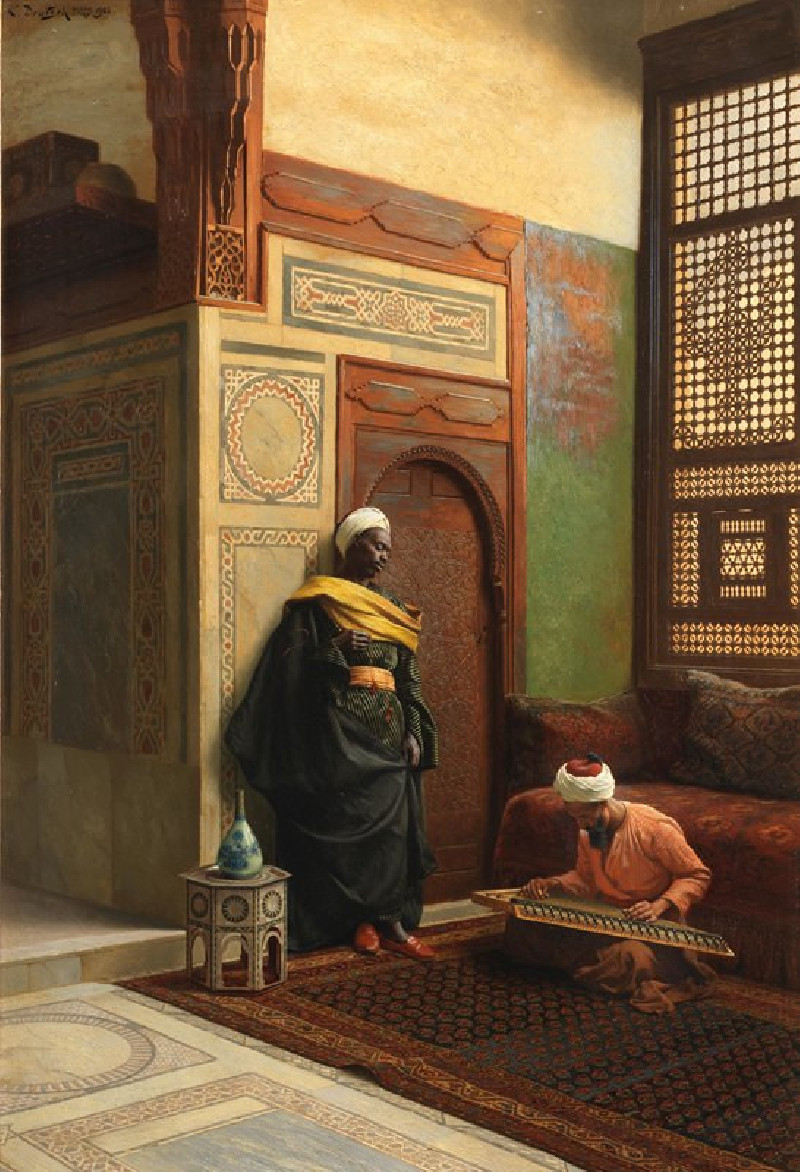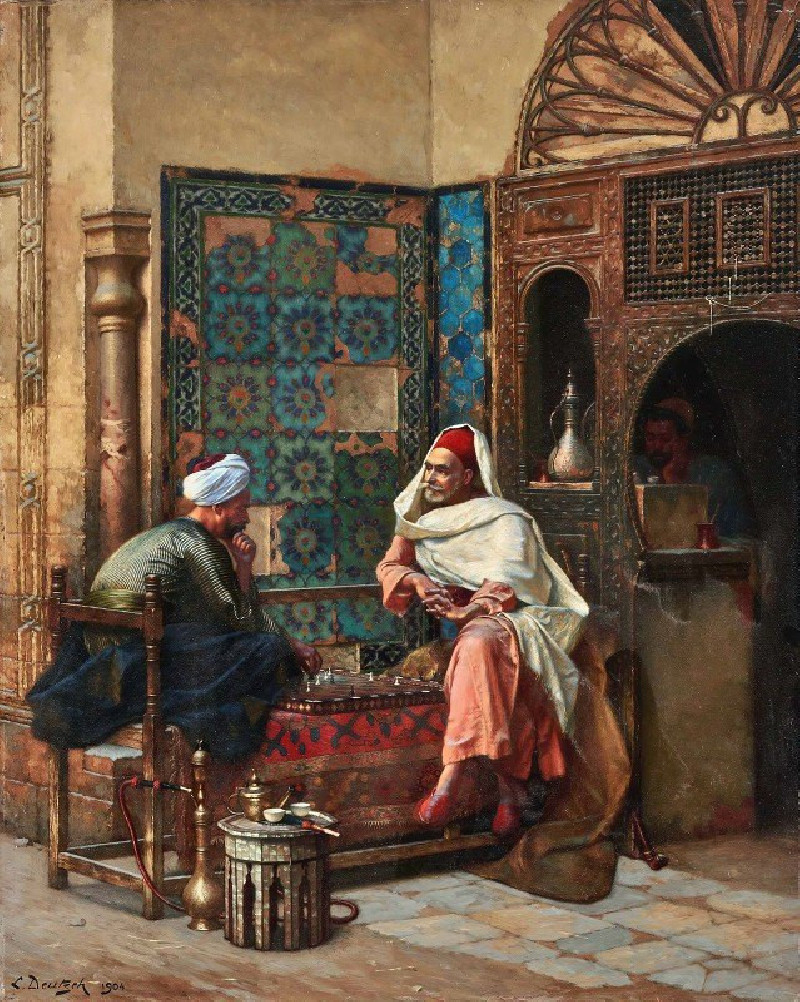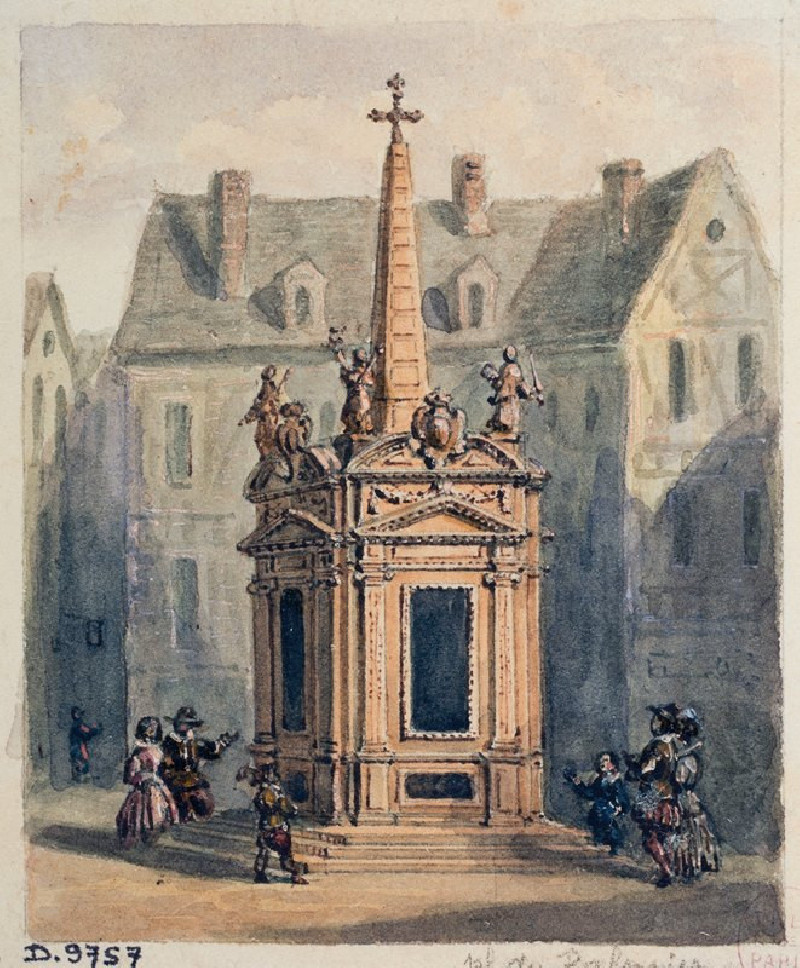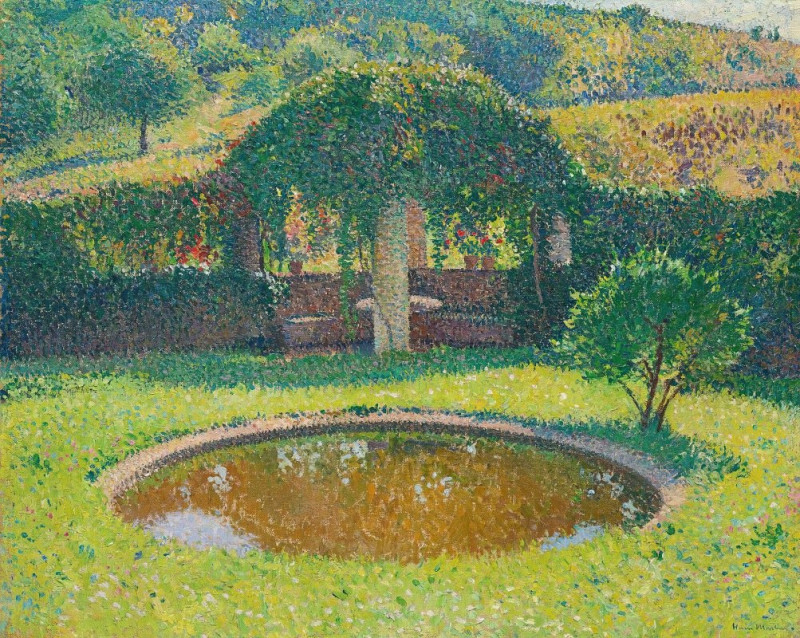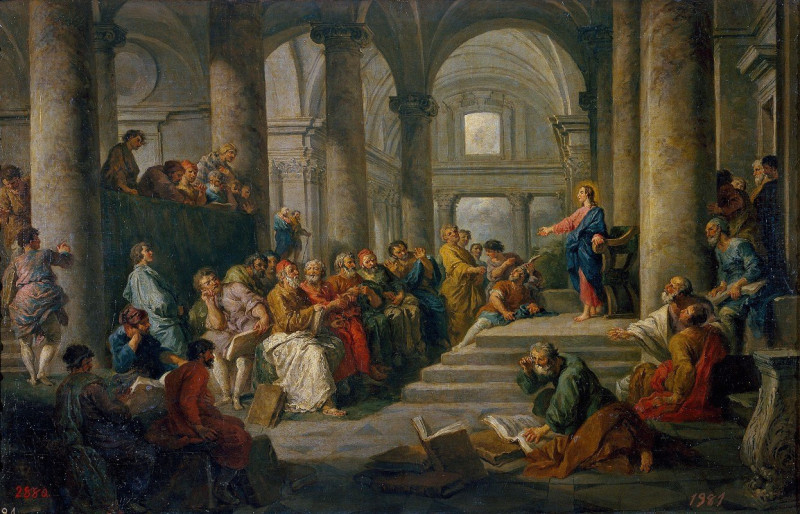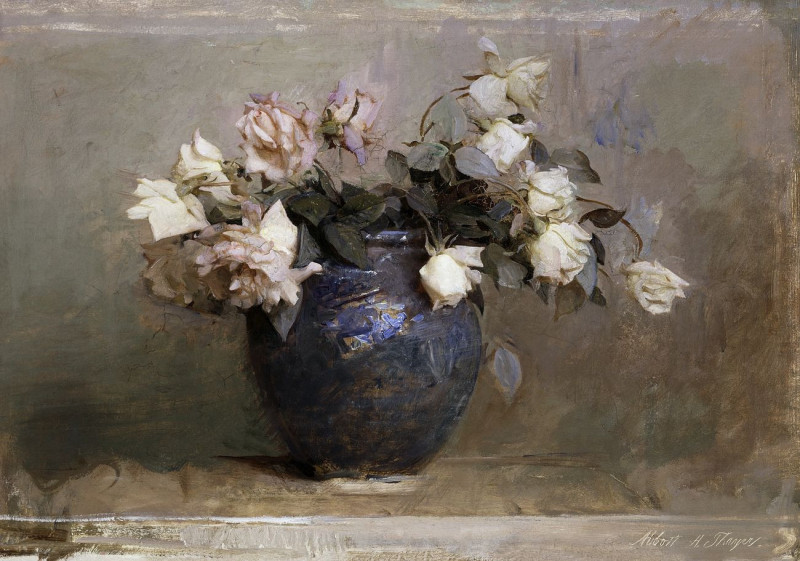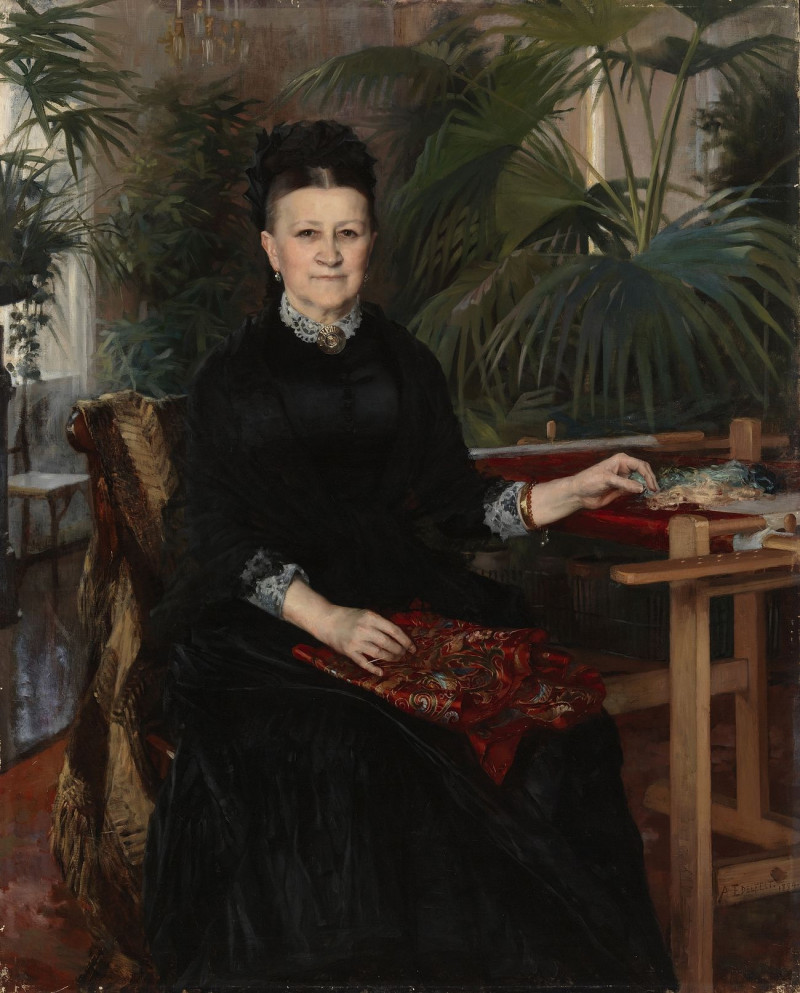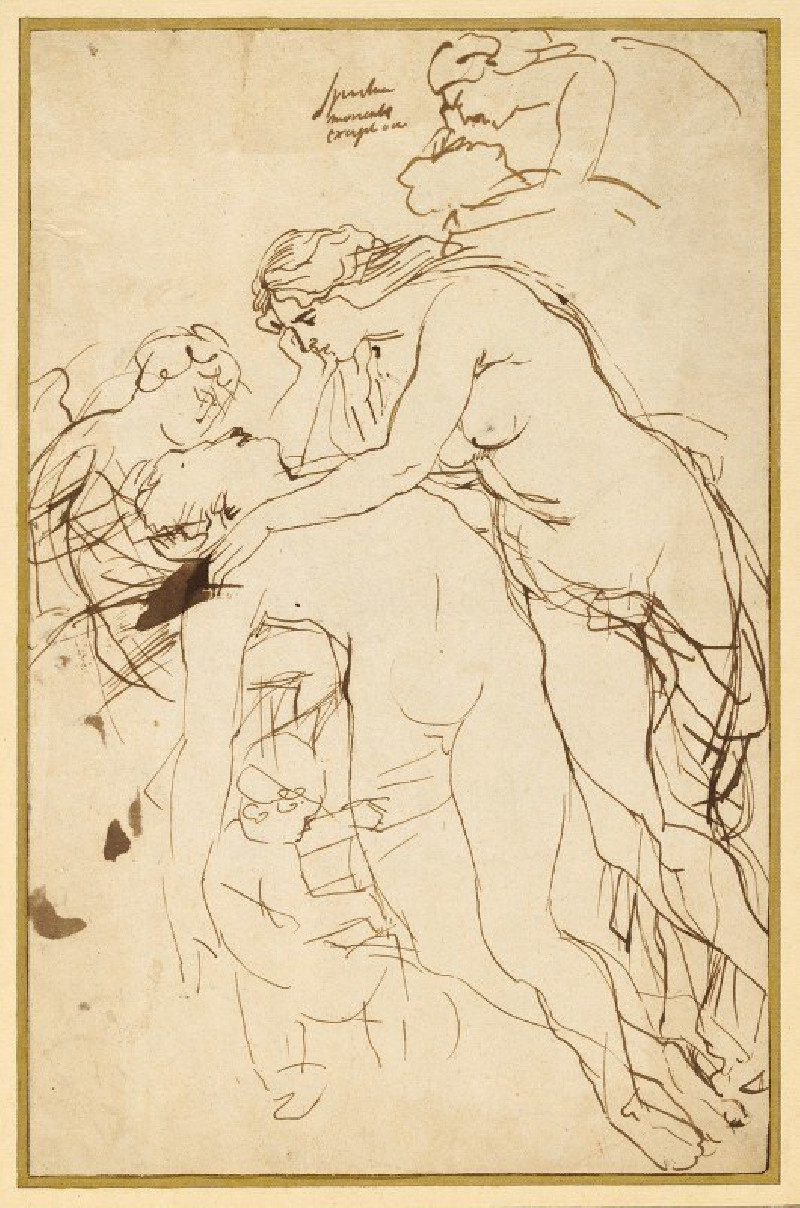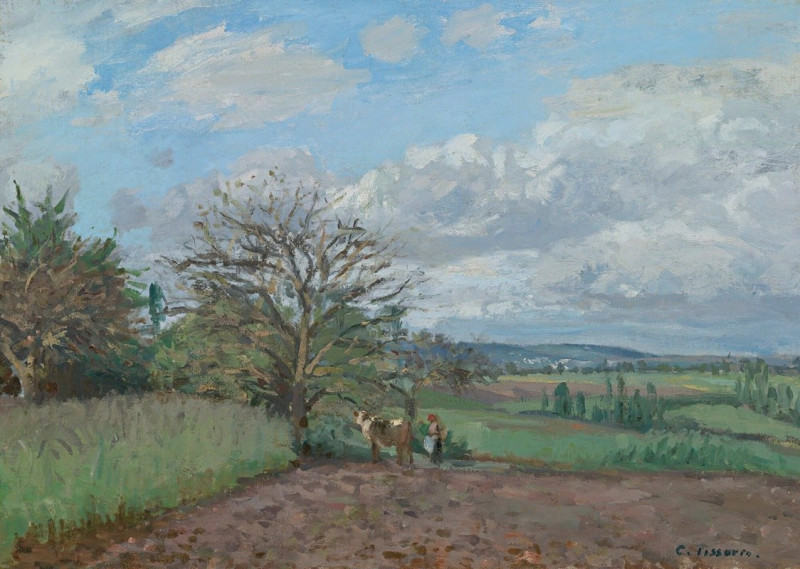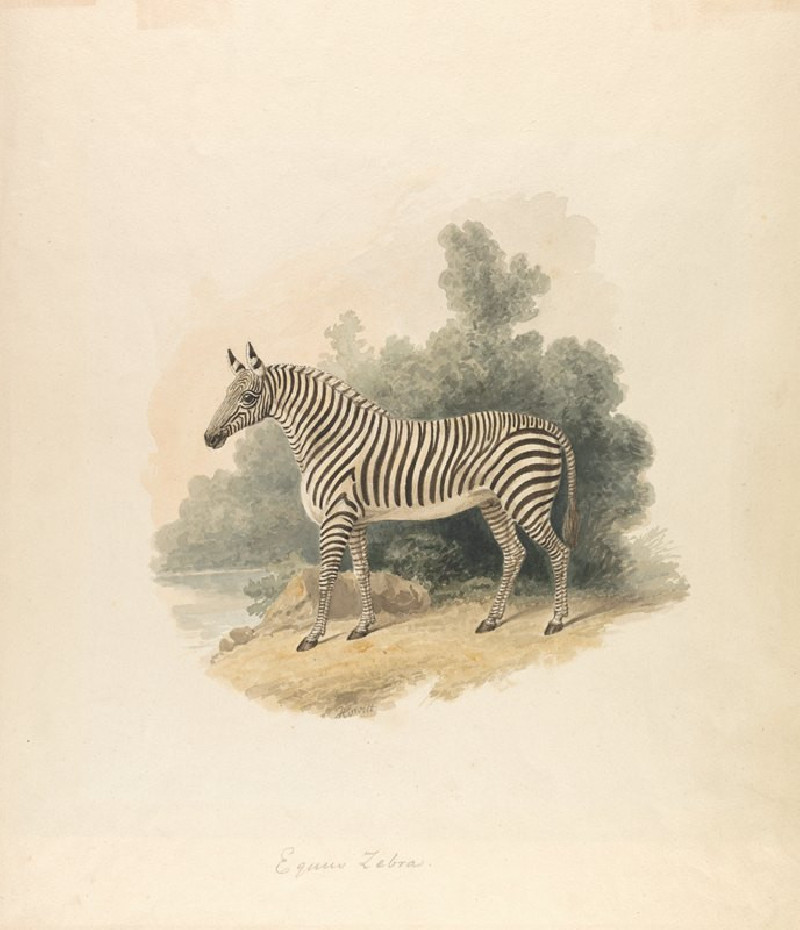The Woodworker (1884)
Technique: Giclée quality print
Recommended by our customers
More about this artwork
Immerse yourself in the rich details of "The Woodworker," an exemplary creation by the Austrian artist Ludwig Deutsch, painted in 1884. This painting captures the essence of craft and tradition, a testament to the skill and dedication of the artisans of its time.Set against a backdrop of a rustic workshop doorway, the painting illustrates a woodworker, portrayed with an air of experienced confidence as he examines a beautifully crafted chest. The woodworker, dressed in traditional attire, including a turban and a striped robe, channels the essence of cultural authenticity. His stance and gaze reflect a mixture of pride and critical examination of his work, indicating his deep connection and commitment to his craft.The scene is richly adorned with other works of art and craftsmanship. Around the woodworker are various intricately designed items such as ornate inlaid boxes and a vividly colored ceramic plate, each showcasing the vibrant arts and crafts culture. The attention to detail in the textures of the stone wall, wooden carvings, and the luminosity of the ceramic ware, contribute to a sense of depth and realism, inviting viewers to not only look but to explore each element.Ludwig Deutsch's focus on meticulous detail and his ability to animate the everyday lives of his subjects make "The Woodworker" not just a visual treat but a narrative piece that speaks volumes about the life and times of its characters. This painting not only celebrates the skill of the artisan but also serves as a window into the rich cultural tapestry of the period.
Delivery
Returns
Ludwig Deutsch was an Austrian painter who settled in Paris and became a noted Orientalist artist.
Details of Ludwig Deutsch's life are obscure. He was born in Vienna in 1855 into a well-established Jewish family. His father Ignaz Deutsch was a financier at the Austrian court. He studied at the Vienna Academy of Fine Arts 1872–1875, then, in 1878, moved to Paris where he became strongly associated with Orientalism.

